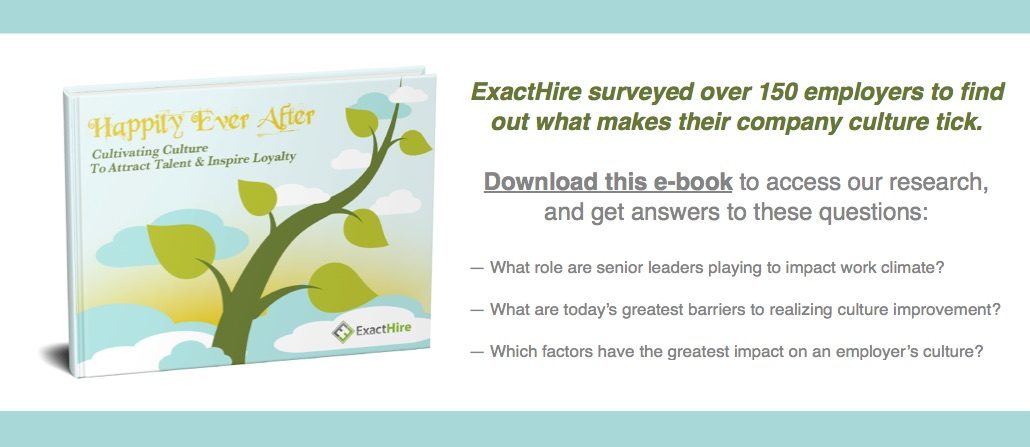The Best Intentions That Ruin the Pursuit of Great Company Culture
My son recently turned eight years old, and because his birthday falls in July during the summer months, our family generally seizes this opportunity to throw a low-cost party in our backyard rather than laying down a small fortune for the latest laser tag / foam ball pit / inflatable bounce house venue. As a result, I usually scour Pinterest to come up with a suitable party theme complete with activities to engage kiddos ranging from four to nine (when you count siblings). This year was no exception, and my best intentions of having a fun-filled water sport extravaganza reminded me of an important lesson along the way.
Sometimes even the best intentions can ruin the pursuit of…
Fun
Success
Productivity
…and perhaps at times…Sanity!
 Here’s why. You know that Zuru Bunch of Balloons product? It’s a magical invention that allows you to fill copious water balloons at once with your garden hose. Well, in my haste to keep a forthcoming water balloon fight “fair,” and prevent any one kid from having a cache of balloons to take out others, I tried to force the rules of the game too much at the expense of fun. By making all the kids line up twenty-feet away while they salivated about potential aerial aquatics domination, their aggressive race to the pile of balloons resulted in shoving, slipping and shouting.
Here’s why. You know that Zuru Bunch of Balloons product? It’s a magical invention that allows you to fill copious water balloons at once with your garden hose. Well, in my haste to keep a forthcoming water balloon fight “fair,” and prevent any one kid from having a cache of balloons to take out others, I tried to force the rules of the game too much at the expense of fun. By making all the kids line up twenty-feet away while they salivated about potential aerial aquatics domination, their aggressive race to the pile of balloons resulted in shoving, slipping and shouting.
The point is…I should have considered other potential outcomes for my carefully laid plans. Like what could happen when you route twenty kids down a narrow, grassy passage between a paver wall and a plastic sheet to a pile of water balloons?
The same thing happens with company culture all the time. Sometimes the consequences are extreme in their destruction, and at other times we can recognize them as valuable red flags that alert us to change our approach. In this blog, I’ll identify a series of good intentions that can burst like an ill-formed water balloon if not planned and executed with care.
1 – Attempting sweeping change, but biting off more than you can chew
Particularly if your organization has issues with how its work culture has turned out, when it does decide to take action to improve it, it can be easy to jump at every opportunity at once. With both economic pressure (“maybe sales will improve if we get our employee engagement act together”) and emotional pressure (“the latest employee survey makes it clear that our staff members are fed up”) to change, organizations might scramble to roll out recognition programs, performance management, lunch and learns and an in-house kegerator all at once. The key to sustainable improvement, however, is embarking on just a few key objectives at once.
2 – Starting with a clean slate, but forgetting where you came from
When rolling out a new set of corporate values, companies should be honest about the habits, behaviors and “ways of doing things” that are ingrained in the business. Just because some of them may be less desirable on their face, doesn’t mean they should be swept under the rug and ignored. Look for ways to leverage them as a positive cultural trait when possible. For example, an organization’s tendency for employees to be abrasively free-wheeling with their opinions could, with a little bit of emotional intelligence training, be channeled into a strength of championing candor for the effective continuous improvement of processes.
When you go against the grain, organizational change becomes harder than necessary. Follow Google’s example by incorporating ways to go with the flow. For example, according to this Harvard Business Review article, before creating paved, permanent pathways on Google’s campus, senior leaders waited to see where the informal pathways, created by worn down grass from heavy foot traffic, emerged. Then, they built the permanent pathways on the blueprint created naturally by employees.
3 – Ignoring prominent influencers in order to call upon everyone in the class

No one likes the kid that constantly raises his hand first in class and squirms in his seat until he’s acknowledged directly. Does it feel like you have a few employees in your organization who play that role only to cast other less vocal employees in the shadow? If so, you naturally want to encourage participation from others in the group. Just be careful not to shun the eager participants to the extent that they are no longer passionate about sharing ideas and improving your organization. Employ their enthusiasm into a more productive means of sharing ideas that doesn’t also alienate others. For example, have periodic one-on-one discussions to get their thoughts so that they aren’t as compelled to blurt out their grand plans in a group setting on a regular basis. Remember that while they are well-positioned influencers in your business, without constructive nurturing they can just as easily become unfortunately placed toxic influencers.
4 – Benchmarking KPIs, but ultimately measuring just for the sake of measuring
The sophistication of measurement tools has skyrocketed in the past decade. The availability and relative affordability of so many more resources has naturally led many organizations to embrace a metric mindset that is unprecedented.
Marketing qualified leads to won sales deals? Data coming right up.
Revenue generated per employee? That’s a breeze.
Time to first response on customer support inquiries?
Come on, at least make it challenging.
Pretty soon, some companies have a dashboard to end all dashboards…in fact the dash has wrapped around the entire vehicle and you need to have eyes in the back of your head to keep up with all the statistics. Eyes glaze over…and because everything is important, nothing is important. Don’t just measure because you can…measure because it is a critical performance indicator for your business. And when it comes to KPIs for culture, take a disciplined approach to evaluating which leading indicators are the true predictors of subsequent employee performance, engagement, and alignment with corporate strategy.
5 – Not getting overzealous about some success, but missing the little wins
Don’t count your chickens before they’ve hatched. We may have won the battle, but the war isn’t over. Our performance last quarter was good, but…
Sensing a pattern? If an organization tends toward a glass half empty mentality (e.g. values conservatism, perhaps?), all is not lost. However, when a company’s focus can’t be shifted even momentarily to celebrate the little wins and milestones along the way, then by the time it gets to its destination, there may no longer be anyone else left to really celebrate. Genuine recognition is at the heart of a healthy culture, and small–but not insignificant–everyday achievements gone unnoticed in the interest of delayed gratification are a grievous offense to a positive culture.
6 – Recognizing the wins, but oh wait…not in a forced manner
So you listened to the previous point about awarding recognition and celebrating achievement when it’s due; however, there’s a wrong way and a right way to do so. Relying only on formal recognition programs, complete with an unoriginal plaque and all-too-familiar group email message stink of insincerity.
Enliven your culture with spontaneous and/or organically-sourced recognitions and celebrations. If your business values continuous learning and collaborative personal development, then celebrate the efforts of others with a subscription to an audiobook service like Scribd or Audible. The individuals are rewarded with a unique benefit, and the organization benefits exponentially as the employees share the latest entrepreneurial ideas they heard during that morning’s commute.
7 – Incentivizing behavior, but unintended outcomes emerge
Going back to my birthday balloon story, as you might imagine, I was left with a lawn full of broken balloon bits. Itty, bitty ones. So, I told a few of the kids I know to be predisposed to be good helpers (you know the ones who raise their hands a lot in class), that if they helped pick up all the little bits in the yard that they’d each get a glow stick toy. The more bits they brought, the brighter their potential hand movements at dusk. Genius plan, right? Well, my little strategizers made the rules work on their behalf. Once they picked up the existing yard bits, they started grabbing unbroken balloons (perhaps out of the hands of those four-year olds I mentioned before) and popping them so they could get more bits, and thus, more glow sticks. A similar issue developed from a pesky snake population problem described here. I’ll take balloon bits over cobras anyday, but I think we can all agree…metaphor or actual maligner to your business…you must be careful about the design of your incentive programs. Otherwise, they can constrict your culture!

8 – Communicating, but in all the wrong ways
Many times a company’s problem with culture stems from a lack of communication. However, occasionally the communication is there, but executed in an unsavory manner. For example, consider the difference between blasting out an edict email message with numbered rules for a forthcoming policy change relative to a town hall-esque meeting between senior leaders and front-line employees with a chance for Q&A. Both scenarios have a different feel, eh?
Additionally, mind your grammar to communicate in a way that is accountable, responsible and never vilifies others.
According to a post by Jeff Shuck with Plenty Consulting
“One giveaway of a dysfunctional culture is that we hear the passive voice. Remember that from English class? Active voice sounds like responsibility: ‘I made the decision.’ In passive voice, the subject is removed: ‘The decision was made.'”
Passive communication leaves to passive engagement and a poor culture.
9 – Accommodating the newest generation, but minimizing the role of other generations
Depending on which definition of the generational birth year spans tickles your fancy, I arguably straddle the boundary between Gen X & Millennial. There is a gob of content about attracting and engaging Millennials. Undoubtedly, this is a critical endeavor as they lead increasingly important initiatives in the modern workforce and certainly impact organizational culture.
Just don’t get so wrapped up in the motivations of the most recent generation to be employed that you alienate the established, seasoned generations in the process. The older I get, the more I appreciate the perspective that I’m able to develop and how it guides the decision-making process. I mean, Robert DeNiro’s character was thought-provoking and indispensable in The Intern, right?!? And while that may be a stereotypical, if not obvious, encapsulation of the idea of including older workers, too, the message is clear.
“If I have seen further, it is by standing on the shoulders of giants.” — Isaac Newton
10 – Being too collaborative, and everything comes up vanilla
Last year, my organization attempted to come up with terms (we didn’t necessarily elevate them to true values) that we felt accurately described our organization. The activity was incorporated into a series of strategy sessions and ALL employees were asked to brainstorm and help narrow down a final list of potential terms together. The result was a resounding “FIR.” That is, Fun, Innovative and Responsive.
Now don’t get me wrong, I believe that all of those things are true about us. The problem is that they could probably describe bunches of companies just like us. They are expected, and are borderline platitudes. Since everyone was involved in this collaborative effort, the senior leaders were beholden to reach consensus. However, the senior leaders are the ones who forged the initial behaviors and attributes that guided our business…not everyone. Moreover, since the three terms we selected are relatively innocuous, we haven’t embraced them in a way that makes them central to our daily behavior. Everyone (including myself) had the best intentions during the brainstorm effort, but our group think resulted in the desire to get the exercise done and land on terms that were just good enough.
11 – Promoting special benefits, but accidentally creating entitlement
So the saying goes, no good deed goes unpunished. While fatalistic in nature, this statement is a good reminder that organizations should periodically remind employees why specific benefits and perqs are offered so that no one starts to take them for granted and/or feel they are absolutely entitled to them.
At one of my previous employers, business was pretty slow during the December holidays, and so the two owners decided to roll-out a partial company shut down over the course of 2-3 weeks in December. It afforded hard-working employees five extra paid days off to rest and recharge their batteries for the new year. The problem is that after a couple of years, tensions arose over which weeks specific employees would get to take off based on department need, tenure, etc. Bickering erupted amongst employees and one day the owners threatened to just take away the extra time off since it wasn’t being appropriately appreciated. Fortunately, the proverbial horse learned to not bite the hand that fed it before any threats were carried out. But not without the evidence of an entitlement culture subtly influencing future management decisions in the process.
12 – Embracing company culture improvement, but failing to acknowledge mini-cultures
In your excitement to unify employees and managers behind a work culture revolution, be sure to leave space for subsets of that culture within the organization. Failing to manage and acknowledge mini-cultures will make it difficult to move any kind of cultural initiative forward. Respecting the attributes of these subsets is the key to making them come together cohesively in a culture that represents the values of the organization and the needs of its employees.
What about the difference between how in-office employees celebrate teammates’ birthdays and work anniversaries relative to those individuals who telecommute frequently or work entirely remotely? Let’s say the organization as a whole values the individual and prides itself on celebrating career milestones. If tradition dictates that in-office employees share a birthday cake once a month, then perhaps remote workers can revel in watching a good-hearted JibJab video starring the faces of their co-workers as an alternative.
Don’t let these cautionary examples of good intentions gone awry deter you from continuous company culture improvement. Do, however, bear the potential outcomes of your efforts in mind as you plan your activities. No one wants to get caught in the face with a metaphorical water balloon when they least expect it. Even if it was super easy and fast to fill up in the first place.
[ raise your hand ] ![]() by Luca Boldrini (contact)
by Luca Boldrini (contact)
cobra nero ![]() by Jim Heising (contact)
by Jim Heising (contact)











